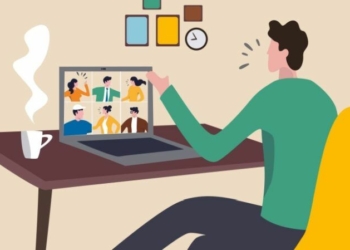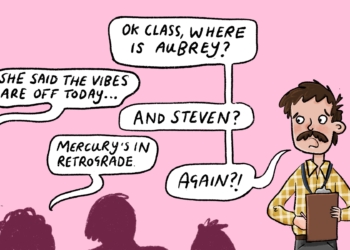This post is an op-ed from Joy F. Johnson.
Creating welcoming and inclusive classrooms for all students is paramount to meeting the needs of all students. As teachers, there are always opportunities to learn more deeply about how to facilitate acceptance in the classroom. Keep reading to learn strategies that you can implement to promote acceptance and inclusion of your Autistic students.
Identify and eradicate ableism in the classroom.
In order to identify ableism, one must first have a clear understanding of the various ways it can manifest in the classroom setting. The first step to doing this is to comprehensively analyze one’s current practices and reflect on whether one’s classroom norms consider neurodiversity. For example, expecting a student to not engage in self-stimulatory behaviors (i.e., ones that are not harmful or disruptive during class activities), simply to conform to Neurotypical standards or behave as their Neurotypical peers do, is rooted in ableism. Often, self-stimulatory behavior is beneficial to the emotional or sensory self-regulation of the students engaging in it.
Furthermore, accommodations should not be confused with lowering expectations. It’s important to note that differences do not equate to deficits and that Neurodivegent students should not be held to Neurotypical “norms” as standard of achievement. Differences do not need to be “fixed,” but rather accepted and accommodated.
Facilitate acceptance by normalizing differences
Often, lack of acceptance is the real barrier to learning, not the individual’s behavior. The only problem or challenge that most Neurodivergent students face is the acceptance from others who might view atypical behaviors as a “problem.”
Classroom learning and norms are often based on Neurotypical standards, which are frequently steeped in ableist thinking. Because of this, Neurodivegent children are often forced to conform to behaviors based on “norms” that do not consider their neurodiversity and that erroneously assign neurodivergent traits or behaviors as “problems,” “weakness,” or “maladaptive.” Acceptance, however, requires discernment between what’s simply a difference and what’s actually a “problematic” or “maladaptive” behavior. When evaluating norms, ask yourself: “Is this behavior harmful or disruptive?” When determining if it’s disruptive, also consider whether it’s merely bothering you (due to “expected norms”) or if it is genuinely disrupting or interfering with other students’ learning? If not, it’s simply a difference and needs no intervention beyond acceptance.
We see this with lack of eye contact being deemed maladaptive when it’s actually more adaptive for Neurodivegent people who find eye contact overstimulating. Forcing a Neurodivegent who finds eye contact aversive or overstimulating in order to comply with the Neurotypical norm of eye contact does nothing but potentially harm the Neurodivegent person. Active attention, in this case, might be indicating a response vocally and/or gesturally. By doing this, the student is not being taught to ignore their self-awareness and self-accommodations, or comply with “norms” that are not inclusive.
Model inclusivity.
In modeling inclusivity, educators must again revisit “norms,” and consequently, how they respond to students whose behaviors may not align with those “norms.” Modeling acceptance of non-harmful and non-disruptive behaviors can be done simply by not responding or bringing attention to them. This normalizes it in the classroom setting and potentially helps students generalize this acceptance across other environments.
In addition, use of inclusive language also should be modeled. Reflect on the terms that are commonly used when referring to Neurodivegent traits such as “inappropriate,” “maladaptive,” “problem behaviors,” “deficits,” and “weaknesses.” These terms have historically been applied to atypical behaviors erroneously, and they do not consider Neurodivegent standards and values, but rather compliance to Neurotypical standards and values. Some recommendations for how to use more inclusive language include, but are not limited to, avoiding functioning labels or other terms rooted in ableism, and instead, using preferred language that aligns with and upholds Neurodivegent culture and values.
Be careful not to encourage masking of traits.
Masking is the process by which an individual changes — or “masks” — their natural personality to conform to social pressures. In education, we can see countless examples of this in terms of setting IEP goals or classroom norms that force Neurodivegent students to conform to the norms of their Neurotypical peers. Teaching a student to act as their peers do — rather than teaching them to maneuver social experiences authentically — can reduce their self-awareness and self-acceptance, and set them up for a lifetime of masking, which can result in great psychological harm.
Maintain human dignity across disabled and non-disabled students.
Reinforcement efforts should focus on using non harmful generalizable reinforcements (naturally occurring when at all possible) that can be transferred to experience in everyday life (natural environments). An example of this is using food as reinforcement in the classroom for disabled students. Food is not a reward. Food is a universal need that all humans should have access to without compromising their dignity. Food can be an easy and effective reward, but that doesn’t mean it’s best!
Aside from the general consideration of ethics surrounding the degradation of an individual in using “edibles” as reward in educational setting, think about how their non disabled peer view them relative to this practice, think about how the disabled student views the self relative to this practice (e.g., impact on self esteem and self worth). Using food as a reward can undermine healthy eating and have quite a few long term negative impacts. This practice is not generalizable in natural environments, can be difficult to fade, may promote dislike for non-reward foods, may promote the development of disordered eating and/or emotional connection to food, as well as interfere with a ones natural ability to regulate their eating and encourage them to eat when they’re not hungry to reward themselves.
Create an inclusive classroom climate
Educators should be continuously assessing classroom dynamics to ensure that structure and accommodations are in place to prevent the exclusion of Neurodicvergent students. One way to do this is by ensuring that preference for atypical leisure activities (such as ripping paper, lining up toys, watching movie credits, in addition to other things) are held with the same respect and value as typical leisure activities. Forcing a student to engage in a leisure activity that they do not define as leisure does not create a meaningful shared socialization or result in leisure for that person. Encourage individuality and facilitate acceptance, respect, and appreciation of unique preferences for leisure.
Additionally, when monitoring activities that include structured classroom or group conversations make sure to support equitable participation and engagement. This looks like ensuring that methods of learning that do not motivate students by comparing them one another and/or reinforce the concept of measuring success by “doing better” than others. Manage participation in a manner that accounts for unique group dynamics and diverse communication styles.
Another important feature that helps to cultivate an inclusive classroom climate is the use of varied and diverse examples that account for Neurodivegent learning styles and representation. This will not only facilitate inclusive learning, but also goes a long way toward modeling acceptance.
Lastly, do not ignore offensive, discriminatory, and insensitive comments in your classroom. Be sure to address these instances and hold students accountable for their behavior. However, it’s important to ensure it is a learning experience and presented as a thoughtful response that shapes reflection and expansion of the student’s current views rather than a reaction steeped in reprimand and punishment.
Use Inclusive Materials
Neurotypical students are accustomed to educational materials and depictions of characters that represent them, their norms, and behaviors. However, this isn’t the case for Neurodivegent students. Educators can remediate this by locating or creating materials that integrate more representation Neurodivegent norms and characters within their students’ learning materials.
Joy F. Johnson, M. Ed., MS, BCBA: I am an Autistic advocate, behavior analyst, clinical director, and adjunct professor that has personally experienced the ills of ableism, racism, and flawed social validity related to my intersectional identities within ABA, educational systems, and society at large. My mission is to provide the comprehensive services the Autistic community deserve as dictated by the Autistic community, contribute to the eradication of ableism, racism, and help to facilitate inclusion and acceptance within ABA, educational systems, and society at large. My ultimate goal being to assist in ensuring Autistic community members are being comprehensively accommodated, accepted, and supported in navigating the world without compromise of their Autistic identity.










:quality(70)/cloudfront-eu-central-1.images.arcpublishing.com/irishtimes/CGYPT6WE7VAO3KJ773SHUVMVBY.jpg?resize=1200,630&ssl=1)



